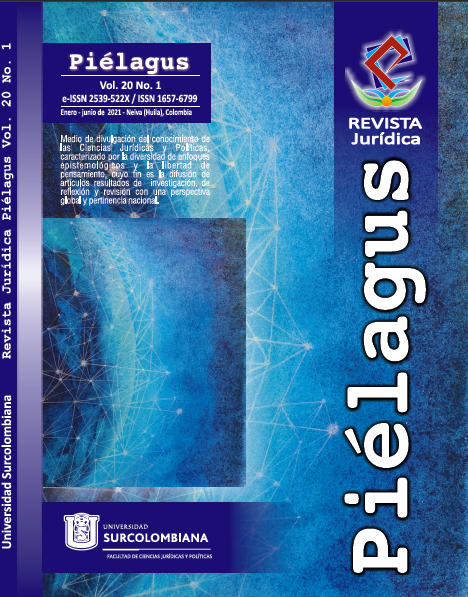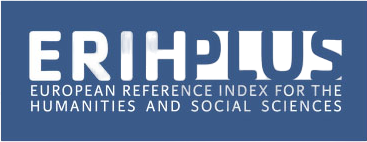La población civil en el punto de mira: guerra informativa y manipulación ciudadana. Una aproximación desde el Derecho Internaciona
##plugins.themes.bootstrap3.article.main##
Las campañas de desinformación se han convertido en una de las herramientas más utilizadas en los modernos conflictos híbridos, que sustituyen el uso de la fuerza convencional por otros medios tecnológicos aunque las consecuencias pueden ser similares. Apuntan a los ciudadanos pero los Estados pagan las consecuencias. Algunas organizaciones internacionales sostienen que vivimos en un estado de guerra informativa, en el que las llamadas noticias falsas (o “fake news”) se han convertido en uno de los métodos más recurrentes para estos conflictos no armados. De hecho, a partir del año 2022 los ciudadanos consumiremos más noticias inventadas que reales, pensadas para dirigir la opinión pública contra sus propias instituciones generalmente alterando la voluntad expresada en las elecciones. Es un nuevo método de guerra incruenta pero con enormes repercusiones para la estabilidad global, representa un desafío que demanda nuevas respuestas. ¿Hasta qué punto las llamadas noticias falsas ponen el peligro la paz y la seguridad mundial? ¿Conviene introducir una nueva categoría de conflictos no armados? Y la más elemental de todas, ¿estamos en situación de guerra o paz?
Descargas
##plugins.themes.bootstrap3.article.details##
I. Althius, J., & Strand, S. (2018). Fake News, a roadmap. NATO Strategic Communications Centre of Excellence, Riga. https://www.stratcomcoe.org/fake-news-roadmap
II. Accessnow.org. (2021). Internet shutdowns and elections handbook. A guide for election observers, embassies, activists, and journalists. https://www.accessnow.org/internet-shutdowns-and-elections-handbook/
III. Barrancos, D. (2019). Las elecciones más hackeables de Europa. En Thiber Digest. Informe mensual de ciberseguridad, (11). https://thiber.org/wp-content/uploads/2019/07/Numero_11_Julio_optimizado.pdf
IV. Bothe, M. (1982). New Rules for Victims of Armed Conflicts. Commentary on the Two 1977 Protocols. Additional to the Geneva Conventions of 1949. Martinus Nijhoff Publishers, Dordrecht. https://doi.org/10.1163/9789004254718
V. Bradshaw, S., Howard, P. N. & Neudert, L. M (2018). Government Responses to Malicious Use of Social Media. NATO Strategic Communications Centre of Excellence, Riga. https://www.stratcomcoe.org/government-responses-malicious-use-social-media
VI. Cleary, T. (2008). El Arte de la Guerra, Sun Tzu. Versión con comentarios de Thomas Cleary. Madrid, ed. EDAF. Original publicado en el siglo V a.c.
VII. Droege, C. (2012). Get off my cloud: cyber warfare, international humanitarian law, and the protection of civilians. International Review of the Red Cross, 94(886). https://doi.org/10.1017/S1816383113000246
VIII. Fundéu RAE. (28 de septiembre de 2017). Noticias falsas o falseadas, mejor que fake news. Fundéu RAE, buscador urgente de dudas. https://www.fundeu.es/recomendacion/noticia-falsa-falseada-fake-news/
IX. Gutiérrez, C. y Cervell M. J. (2012). El Derecho Internacional en la Encrucijada. Madrid, ed. Trotta.
X. Haiden, L. (2018). Tell me lies, tell me sweet lies. Fake News, a roadmap. NATO Strategic Communications Centre of Excellence Riga, 7-14. https://stratcomcoe.org/cuploads/pfiles/fake_news_book_final_full_version.pdf
XI. Hoogensen, G. (2020, 20 May). Coronavirus, invisible threats and preparing for resilience. NATO Review. https://www.nato.int/docu/review/articles/2020/05/20/coronavirus-invisible-threats-and-preparing-for-resilience/index.html
XII. Levin, D. (2016). When the Great Power Gets a Vote: The Effects of Great Power Electoral. International Studies Quarterly, 60, (60). Issue 2, June 2016, pp. 189–202. https://doi.org/10.1093/isq/sqv016
XIII. Lieber, F. (1863). Instructions for the Government of Armies of the United States in the Field. International Committee of the Red Cross. https://ihl-databases.icrc.org/ihl/INTRO/110
XIV. Mateos, I. (15 de enero de 2020). EE.UU y Rusia miden sus fuerzas en una guerra fría cibernética Observatorio de Inteligencia, Seguridad y Defensa. Revista digital. https://observatorio.cisde.es/actualidad/ee-uu-y-rusia-miden-sus-fuerzas-en-una-guerra-fria-cibernetica/
XV. Panetta, K. (Octubre 03 de 2017). Smarter with Gartner. Gartner Top Strategic Predictions for 2018 and beyond. https://www.gartner.com/smarterwithgartner/gartner-top-strategic-predictions-for-2018-and-beyond/
XVI. Payne, K. (2005). The media as an instrument of war. Parameters, 35(1). United States Army War College. Spring 2005. https://press.armywarcollege.edu/parameters/vol35/iss1/10
XVII. Pizarroso, A. (2007). Periodismo de guerra, Madrid, Ed. Síntesis.
XVIII. Schmitt, M. (2002). Wired warfare: Computer network attack and jus in bello. International Review of the Red Cross, 84(846), 377-378. https://doi.org/10.1017/S1560775500097741
XIX. Schmitt, M. (2017). Tallinn manual 2.0 on the international law applicable to cyber warfare. Cambridge University Press.
https://doi.org/10.1017/9781316822524
XX. Sciutto, J. (2019). The Shadow War: Inside the Modern-Day Undeclared Battles Waged Against America. Harper Collins Publisher.
XXI. Soroush, V., Deb, R. & Sinan, A. (2018). The spread of true and false news online. Science 09(359), pp. 1146-1151. https://doi.org/10.1126/science.aap9559
XXII. Symantec. (2019). Internet Security Threat Report Volume 24. https://docs.broadcom.com/doc/istr-24-2019-en
XXIII. ONU. (1945a). Carta de San Francisco. https://www.un.org/es/about-us/un-charter
XXIV. ONU. (1945b). Estatuto de la Corte Internacional de Justicia. https://www.un.org/es/about-us/un-charter/statute-of-the-international-court-of-justice
XXV. ONU. (1970). Asamblea General de la Organización de Naciones Unidas. A/RES/2625(XXV)
XXVI. ONU. (1974). Asamblea General de la Organización de Naciones Unidas. Tomado de A/RES 3314 (XXIX).
XXVII. ONU. (2018). Asamblea General de la Organización de Naciones Unidas. A/RES/73/27
XXVIII. ONU. (2020b). Asamblea General de la Organización de Naciones Unidas. A/RES/74/157.
XXIX. Comisión Europea. (2018). Plan de Acción contra la Desinformación. Tomado de https://eur-lex.europa.eu/legal-content/ES/TXT/HTML/?uri=CELEX:52018JC0036&from=en Revisado 30 junio 2021.
XXX. Council of Europe (2001) Convention on Cybercrime. Council of Europe - Convention on Cybercrime (ETS No. 185)
XXXI. Council Of Europe. (2017). Information Disorder: Toward an interdisciplinary framework for research and policy making. https://rm.coe.int/information-disorder-toward-an-interdisciplinary-framework-for-researc/168076277c
XXXII. Council of Europe. (2018). Recommendation of the Committee of Ministers to member States on the roles and responsibilities of internet intermediaries. https://rm.coe.int/1680790e14
XXXIII. Council of Europe. (2019). Declaration by the Committee of Ministers on the financial sustainability of quality journalism in the digital age. https://search.coe.int/cm/pages/result_details.aspx?objectid=090000168092dd4d
XXXIV. European Commission. (2018). Fake News and Disinformation Online. https://data.europa.eu/data/datasets/s2183_464_eng?locale=en
XXXV. European Commission. (2019a). Código de buenas prácticas de la Unión en materia de desinformación. (versión en español). Tomado de https://digital-strategy.ec.europa.eu/en/policies/code-practice-disinformation
XXXVI. European Commission. (2019b). Code of Practice on Disinformation. Tackling online disinformation. Disinformation: A threat to democracy - Brochure | Shaping Europe's digital future.
XXXVII. European Parliament. (2019). Resolution on foreign electoral interference and disinformation in national and European democratic https://www.europarl.europa.eu/doceo/document/TA-9-2019-0031_EN.html Revisado 30 Junio 2021
XXXVIII. International Committee of the Red Cross -ICRC-. (2005). Customary IHL, art. 57. Ruses of war. https://ihl-databases.icrc.org/customary-ihl/eng/docs/v1_rul_rule57#Fn_5496F01B_00001.
XXXIX. International Committee of the Red Cross -ICRC-. (2015). International humanitarian law and the challenges of contemporary armed conflicts. https://www.icrc.org/en/document/international-humanitarian-law-and-challenges-contemporary-armed-conflicts
XL. International Committee of the Red Cross -ICRC-. (2019). International Humanitarian Law and Cyber Operations during Armed Conflicts Position paper. https://www.icrc.org/en/document/international-humanitarian-law-and-cyber-operations-during-armed-conflicts#gs.ke2c5o
XLI. Parlamento Europeo. (2016). Resolución sobre la comunicación estratégica de la Unión para contrarrestar la propaganda de terceros en su contra. https://www.europarl.europa.eu/doceo/document/TA-8-2016-0441_ES.pdf?redirect
XLII. España. D. 14/2019. Por el que se adoptan medidas urgentes por razones de seguridad pública en materia de administración digital, contratación del sector público y telecomunicaciones. Documento BOE-A-2019-15790
XLIII. North Atlantic Treaty Organization -NATO-. (2018). Brussels Summit Declaration. https://www.nato.int/cps/en/natohq/official_texts_156624.htm#21
XLIV. UNESCO. (2020). Periodismo, libertad de prensa y COVID-19. Tendencias mundiales en libertad de expresión y desarrollo de los medios de comunicación. https://en.unesco.org/sites/default/files/unesco_covid_brief_es.pdf
XLV. World Forum for Democracy. (2019) Is democracy in danger in the information age? World Forum for Democracy 2019
XLVI. World Health Organization. (2 de febrero de 2020). Novel Coronavirus (2019-nCoV). Situation Report. Tomado de https://www.who.int/docs/default-source/coronaviruse/situation-reports/20200202-sitrep-13-ncov-v3.pdf
XLVII. International Criminal Tribunal for the former Yugoslavia -ICTY-. (1995). Decision on the Defence Motion for Interlocutory Appeal on Jurisdiction. The Prosecutor v. Dusko Tadic, IT-94-1-A. Decision on the Defence Motion for Interlocutory Appeal on Jurisdiction
XLVIII. International Court of Justice -ICJ-. (1996). Legality of the threat or the use of nuclear weapons. Advisory Opinion. https://www.icj-cij.org/files/case-related/95/095-19960708-ADV-01-00-EN.pdf
XLIX. ONU. (1991a). Consejo de Seguridad de la Organización de Naciones Unidas. Tomado de S/RES/688(1991)
L. ONU. (1991b). Consejo de Seguridad de la Organización de Naciones Unidas. Tomado de S/RES/713(1991)
LI. ONU. (1992a). Consejo de Seguridad de la Organización de Naciones Unidas. tomado de S/RES/731(1992).
LII. ONU. (1992b). Consejo de Seguridad de la Organización de Naciones Unidas. Tomado de S/RES/748(1992).
LIII. ONU. (1993). Consejo de Seguridad de la Organización de Naciones Unidas. Tomado de S/RES/808(1993).
LIV. ONU. (1994a). Consejo de Seguridad de la Organización de Naciones Unidas. Tomado de S/RES/940(1994).
LV. ONU. (1994b). Consejo de Seguridad de la Organización de Naciones Unidas. Tomado de S/RES/949(1994).
LVI. ONU. (2010). Asamblea General de la Organización de Naciones Unidas. Tomado de A/65/201.
LVII. ONU. (2011). Consejo de Seguridad de la Organización de Naciones Unidas. Tomado de S/RES/1973(2011).
LVIII. ONU. (2015). Consejo de Seguridad de la Organización de Naciones Unidas. Tomado de S/RES/2220 (2015).
LIX. ONU. (2019a). Consejo de Seguridad de la Organización de Naciones Unidas. Tomado de S/RES/2482(2019).
LX. ONU. (2019b). Consejo de Seguridad de la Organización de Naciones Unidas. Tomado de S/RES/2490(2019).
LXI. ONU. (2020a). Asamblea General de la Organización de Naciones Unidas. Tomado de A/RES/74/147.
LXII. ONU. (2021). Asamblea General de la Organización de Naciones Unidas. Grupo de Expertos Gubernamentales sobre los avances en la información y las telecomunicaciones en el contexto de la seguridad internacional. tomado de A/65/201.
LXIII. Corte Interamericana Derechos Humanos. (2013, 22 agosto) Sentencia Caso Mémoli v. Argentina. http://www.corteidh.or.cr/docs/casos/articulos/seriec_265_esp.pdf
LXIV. Corte Interamericana Derechos Humanos. (2013, 3 de septiembre). Sentencia Caso Vélez Restrepo y familiares v. Colombia. https://corteidh.or.cr/docs/casos/articulos/seriec_248_esp.pdf
LXV. Corte Suprema de Justicia. (2014, 20 de agosto). Sentencia C-593/14 (Jorge Ignacio Pretelt Chaljub, M. P.). https://bit.ly/36v1n1l.
LXVI. European Commission. (2018a). Experts appointed to the High-Level Group on Fake News and online disinformation | Shaping Europe's digital future. https://digital-strategy.ec.europa.eu/en/news/experts-appointed-high-level-group-fake-news-and-online-disinformation
LXVII. European Commission. (2018c) Democracy and Elections. Special Eurobarometer 477.
https://coinform.eu/wp-content/uploads/2019/02/Euro-Barometer.pdf
LXVIII. Ingatidou S. (2019). EU–US Cooperation on Tackling Disinformation,Catham House. The Royal Institute of International Affairs. https://www.chathamhouse.org/sites/default/files/2019-10-03-EU-US-TacklingDisinformation.pdf
LXIX. International Committee of the Red Cross -ICRC-. (1874). Project of an International Declaration concerning the Laws and Customs of War. https://ihl-databases.icrc.org/applic/ihl/ihl.nsf/Article.xsp?action=openDocument&documentId=11CC9AB4930720C4C12563CD0051555C
LXX. International Committee of the Red Cross -ICRC-. (1987). Commentaries to Additional Protocol 1.
LXXI. International Committee of the Red Cross -ICRC-. (2017). The Potential Human Cost of Cyber Operations.
LXXII. North Atlantic Treaty Organization -NATO-. (2016). Warsaw Summit Communiqué. https://www.nato.int/cps/en/natohq/official_texts_133169.htm
LXXIII. North Atlantic Treaty Organization -NATO-. (2020). Coronavirus, invisible threats and preparing for resilience. NATO Review. Coronavirus, invisible threats and preparing for resilience
LXXIV. Suárez-Serrano, Ch. (2017). Periodismo y Derecho Internacional Humanitario, un análisis para el siglo 21. Madrid, Dykinson. https://doi.org/10.2307/j.ctt1zgwj02
LXXV. The Embassy of the Russian Federation to the United Kingdom of Great Britain and Northern Ireland (2015) Press Release, The Military Doctrine of the Russian Federation. https://www.rusemb.org.uk/press/2029

















